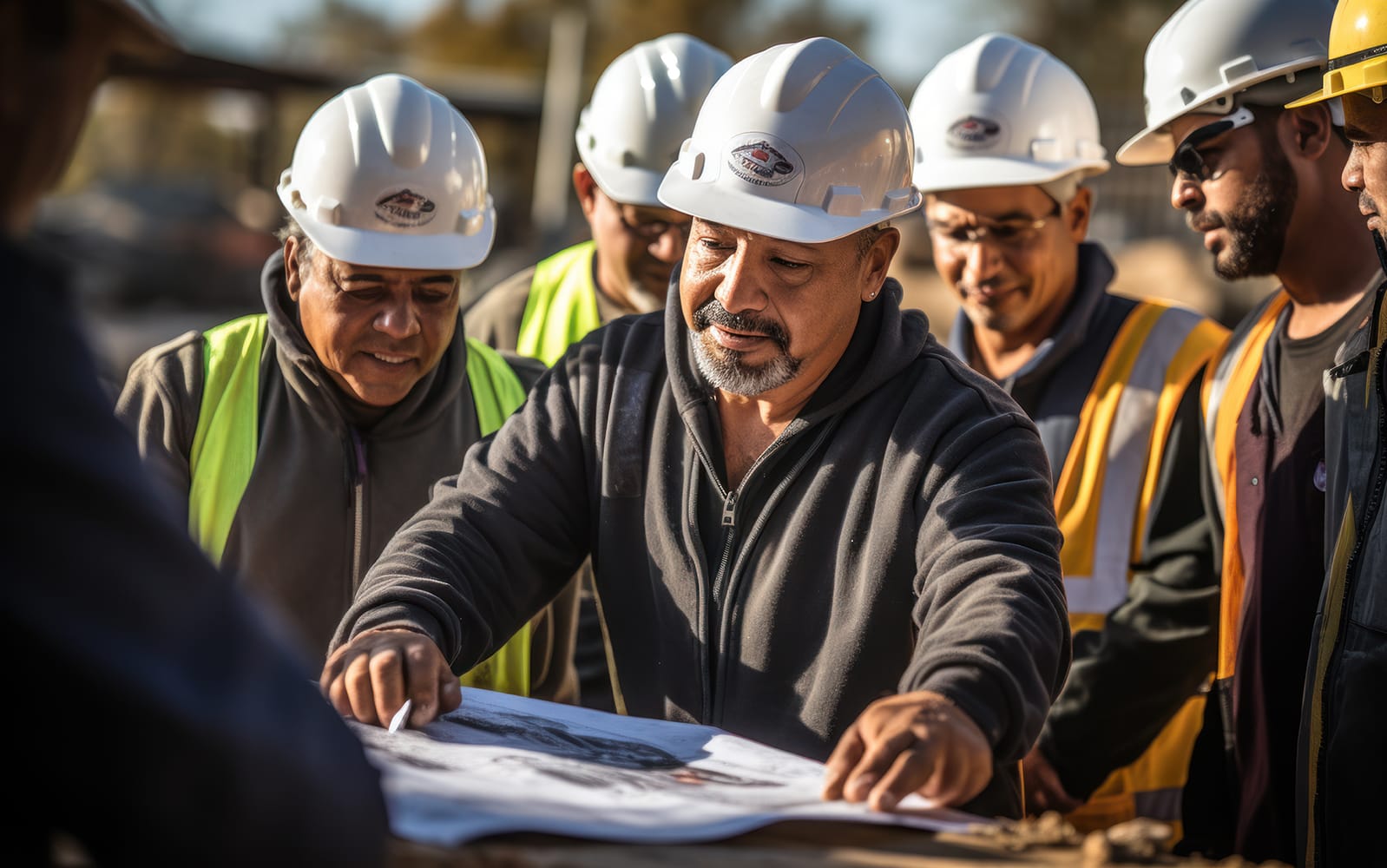Policy
Trump’s Gambit: Homebuilders Brace For A Tariff Triple-Threat
New tariffs on Canadian and Chinese imports threaten to derail homebuilders’ hard-won cost and margin gains. The ripple effects could push housing costs higher, squeeze builder profits, and reignite inflationary pressures.

U.S. homebuilders woke up this morning to find their hard-won battles on the margin front — on both direct cost price leverage and increased building lifecycle velocity — squarely in jeopardy.
President Donald Trump’s sweeping new tariffs — 25% on Canadian imports, along with an additional 10% levy on goods from China — have ignited fears that home construction costs will spike, eroding affordability for already strained homebuyers and cutting into builders' per-home gross margins.
The National Association of Home Builders (NAHB) wasted no time in denouncing the move.
More than 70% of the imports of two essential materials that home builders rely on—softwood lumber and gypsum (used for drywall)—come from Canada and Mexico, respectively,” said NAHB Chairman Carl Harris. “Tariffs on lumber and other building materials increase the cost of construction and discourage new development, and consumers end up paying for the tariffs in the form of higher home prices.”
In practical terms, the new levies on Canadian softwood lumber come on top of an already substantial 14.5% duty rate, bringing the total effective tariff burden to nearly 40%. That’s a jarring figure, given that about 30% of U.S. softwood lumber consumption depends on Canadian imports. The impact on home construction costs could be severe, with homebuilders forced to absorb the cost hikes or pass them on to consumers through higher prices.
It should be said upfront that the President's tariff measures – a few of which are already in action – are a gambit, an opening salvo of aggressive, expansive negotiations on both trade disputes and security policy.
The Wall Street Journal's James Mackintosh writes:
President Trump’s on-again, off-again tariffs briefly hit the market on Monday, before fear evaporated. What it shows: Investors are convinced he will use tariffs to extract concessions on other issues, rather than, as he keeps saying, to raise money and force companies to relocate to America."
A Three-Headed Threat to Housing Affordability
The tariff shock adds to what is already a fragile housing affordability environment. First, rising material costs directly increase home prices, putting ownership further out of reach for many Americans. Second, homebuilders will likely pass on these added costs, leading to higher monthly mortgage payments for buyers grappling with steep interest rates. Third — and perhaps most consequentially — the inflationary pressure from higher material costs could prompt the Federal Reserve to reevaluate its rate policy, potentially delaying expected interest rate cuts and keeping borrowing costs higher for longer.
Wolfe Research equity analyst Trevor Allinson underscored this concern:
Indirectly, tariffs are clearly inflationary and imply a higher-for-longer mortgage rate environment, which is the greatest current demand headwind.”
His analysis suggests that homebuilders could see gross margin compression of roughly 160 basis points due to higher material costs. If builders attempt to pass those costs on, even modest price hikes could price out significant portions of the homebuying market. According to NAHB data, a $76 increase in the average monthly mortgage payment removes roughly 1.1 million potential buyers from the market.
Short-Term Shock, Long-Term Uncertainty
The effects of these tariffs will ripple through the supply chain and distribution networks, affecting more than just homebuilders. Building products manufacturers with significant supply dependencies in Canada and Mexico, such as Fortune Brands Innovations (FBIN) and American Woodmark (AMWD), may face increased costs and logistical challenges. In its analysis, Wolfe Research pointed out that companies with significant manufacturing exposure in Mexico and Canada, including AMWD (four of 18 facilities in Mexico) and FBIN (~$340 million in supply chain exposure to Mexico), are particularly vulnerable.
Taylor Morrison CEO Sheryl Palmer echoed industry concerns, noting in an interview with CNBC's Diana Olick that while larger homebuilders may have more pricing flexibility, the broader industry — including smaller and mid-sized builders— will struggle with tighter margins.
Even with a smaller portion of our lumber coming from Canada, and some materials from Mexico, we will all be affected—which, in turn, can impact consumers and their ability to purchase a home in the short term,” Palmer said.
The political dimensions of these tariffs are equally complex. President Trump has framed them as a negotiating tool to secure broader trade and border security agreements. Mexico, in particular, has been given a 30-day reprieve in exchange for President Claudia Sheinbaum's commitment to escalate efforts to curb fentanyl trafficking. While this move defers the immediate impact on Mexican goods, it does little to ease the long-term anxiety surrounding an all-out trade war.
A Strategic Crossroads for Builders
For homebuilders, this latest policy shift forces tough strategic decisions. The industry has only recently begun to regain stability following pandemic-era supply chain disruptions, labor shortages, and fluctuating demand cycles. With vertical construction costs having declined approximately 9% over the past year — largely due to stabilized lumber prices — builders were beginning to see a path toward normalized gross margins.
The new tariffs upend that trajectory.
Moreover, the timing couldn’t be worse. The home building industry had been hoping for a potential Federal Reserve rate cut to reignite buyer activity in 2025. Instead, the tariffs could disrupt inflation expectations, delaying those rate cuts and prolonging affordability challenges. The alternative — absorbing costs rather than passing them on to buyers — is no more palatable, as it would place immense strain on bottom-line performance.
Looking ahead, homebuilders may explore alternative sourcing strategies, shifting procurement to domestic suppliers where possible or renegotiating supply agreements. However, with higher domestic lumber prices than imports, such strategies offer little immediate relief. The industry will also ramp up its lobbying efforts to seek exemptions on key building materials, arguing that housing affordability should not be collateral damage in broader trade disputes.
Bottom Lines
Homebuilders and their buyers now face a new layer of uncertainty in an already dicey, precarious market.
Higher input costs, squeezed margins, and potential inflationary ripple effects create a profoundly challenging environment for the industry. As NAHB continues to push for material exemptions and policymakers weigh the broader economic impact, the coming weeks will be crucial in determining whether this tariff policy evolves into a full-scale trade war—or whether a more strategic, industry-conscious approach prevails.
MORE IN Policy
Texas Treads A New Path Into Zoning To Battle Housing Crisis
Texas is one of the nation's most active homebuilding states, yet affordability slips out of reach for millions. Lawmakers now aim to rewire the state’s zoning laws to boost supply, speed up approvals, and limit local obstruction. We unpack three key bills and the stakes behind them.
Together On Fixing Housing: Solve Two, Start the Rest
NAHB Chief Economist Robert Dietz and Lennar Mortgage President Laura Escobar argue that the housing crisis won’t be solved by magic. It starts with a unified focus on two or three priorities—a rallying cry for builders, developers, lenders, and policy-makers.
Zone Offense: North Carolina Moves To Fast-Track By Right Housing
North Carolina legislators are pushing a bipartisan bill that could fast-track housing where people need it most: near jobs and transit. Richard Lawson breaks down what it means, how it compares to other states’ moves, and why developers are watching closely.
